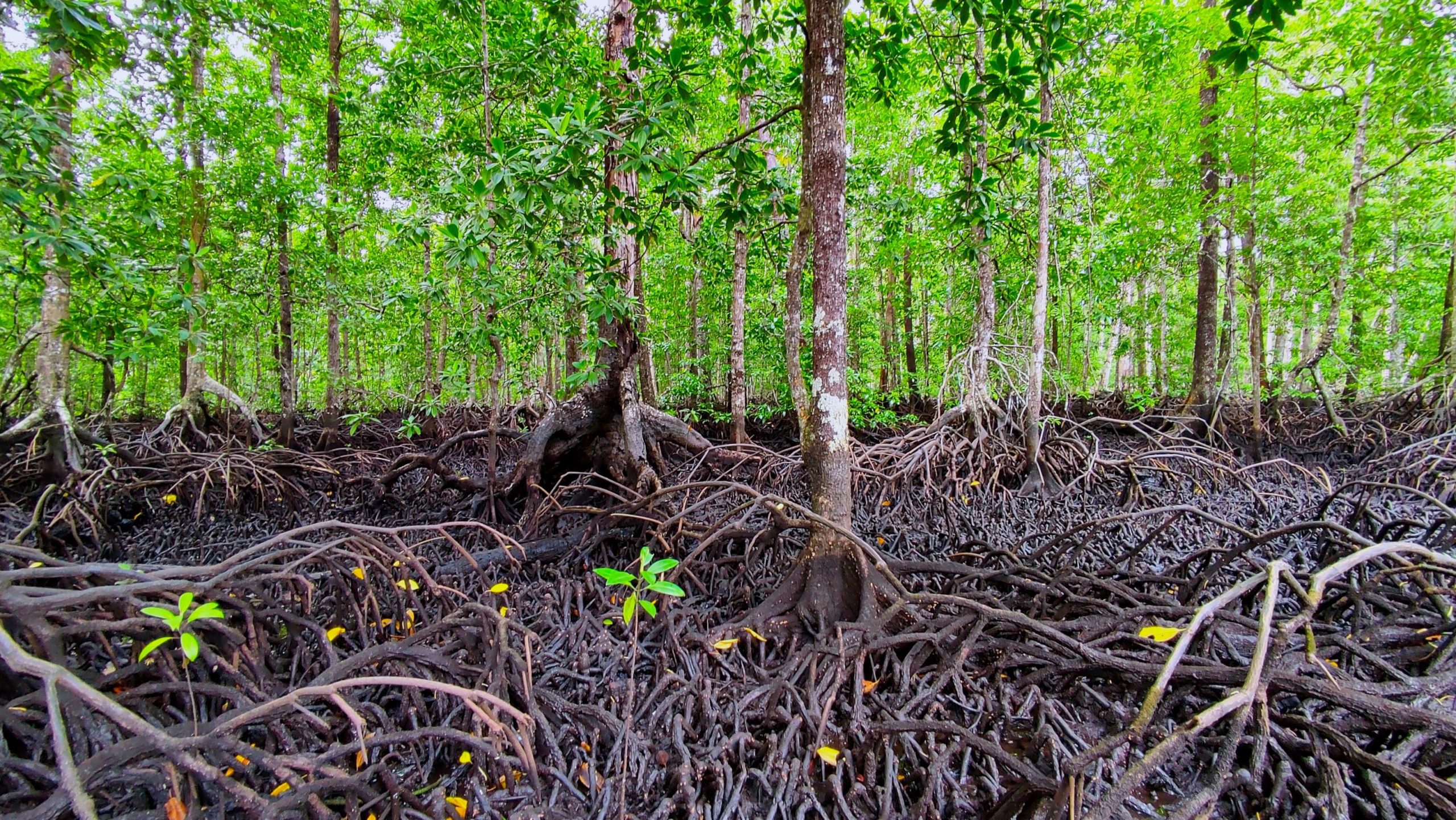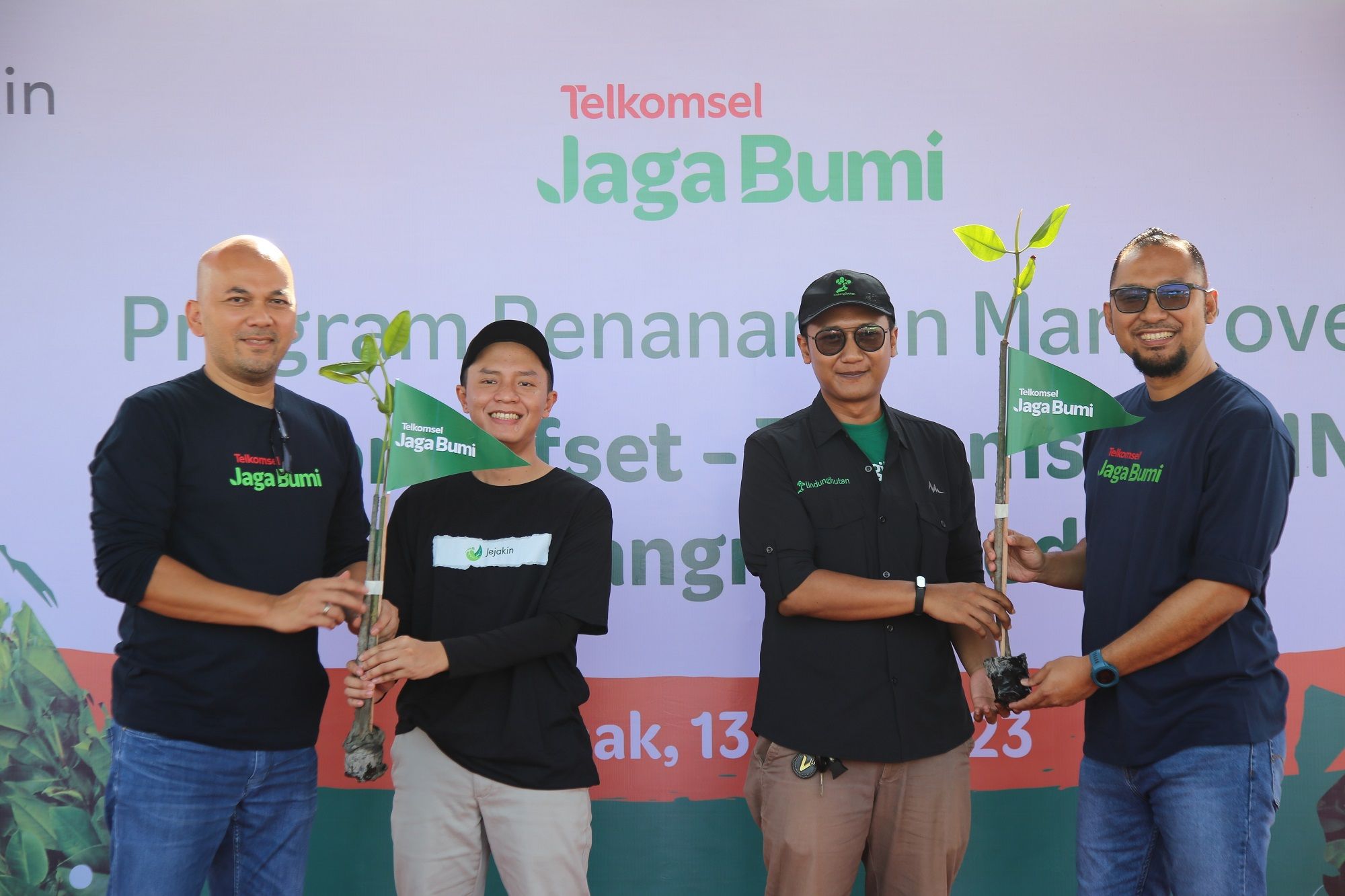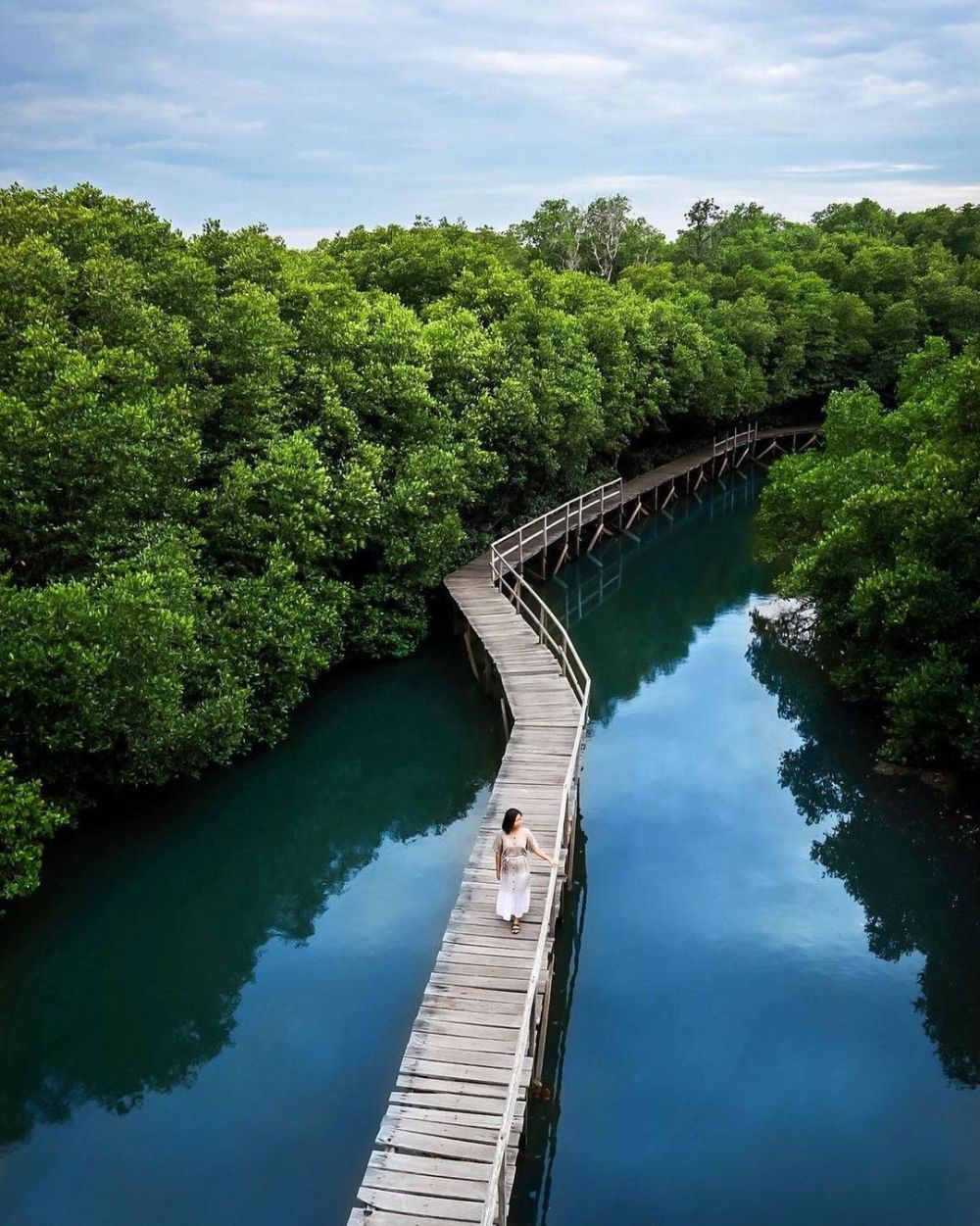
Potret Hutan Mangrove Terbaru 2020 di Indonesia - Fransiskustv - Source www.fransiskustv.com
| Tahun | Luas Hutan Mangrove (ha) | Persentase Penyusutan |
|---|---|---|
| 2021 | 3.339.330 | - |
| 2022 | 3.221.477 | 3,6% |
FAQ
Laporan Terbaru: Hutan Mangrove Indonesia Menyusut 3,6% Dalam Setahun provides comprehensive insights on the state of Indonesia's mangrove ecosystems. This FAQ aims to address commonly asked questions and clarify misconceptions regarding the report.

Mangrove Indonesia yang Amat Berguna | Indonesia Baik - Source indonesiabaik.id
Question 1: What is the significance of mangrove forests?
Mangrove forests are crucial for coastal ecosystems, providing habitat for marine life, protecting shorelines from erosion, and sequestering carbon. Their loss has far-reaching environmental and economic consequences.
Question 2: What are the primary drivers of mangrove deforestation?
The report identifies several main causes of mangrove loss, including land conversion for aquaculture, development projects, and unsustainable harvesting practices.
Question 3: What measures are being taken to protect mangroves?
The Indonesian government and conservation organizations are implementing various initiatives to conserve mangrove forests, such as restoration programs, community-based management, and law enforcement.
Question 4: What are the implications of mangrove loss for local communities?
Mangrove loss affects the livelihoods of coastal communities reliant on fishing and other marine-based activities. It also exposes them to increased risks of flooding and other natural disasters.
Question 5: What can individuals do to contribute to mangrove conservation?
Individuals can support mangrove conservation efforts by reducing their ecological footprint, advocating for sustainable policies, and engaging in citizen science initiatives.
In conclusion, the report highlights the pressing need to protect Indonesia's mangrove forests for the benefit of both coastal communities and the environment. Collaborative efforts and sustainable management practices are essential to ensure their long-term preservation.
Additional Resources:
Tips to Address Indonesia's Mangrove Loss
According to the recent report, "Latest Report: Indonesia's Mangrove Forest Declines 3.6% in a Year," urgent action is necessary to mitigate the ongoing loss of these valuable ecosystems. Here are some tips for individuals and organizations to contribute to mangrove conservation:

Upaya Konservasi Hutan Mangrove Dapat Dilakukan Dengan Cara - Homecare24 - Source homecare24.id
Tip 1: Support Mangrove Restoration and Reforestation Efforts
Participating in tree-planting programs or donating to organizations involved in mangrove restoration helps replenish depleted mangrove areas. These initiatives restore coastal habitats, enhance marine biodiversity, and combat climate change.
Tip 2: Reduce Plastic Pollution
Plastic waste poses a significant threat to mangroves, entangling wildlife and harming their delicate ecosystem. Reduce plastic consumption, dispose of plastic responsibly, and participate in beach cleanups to minimize its impact on mangrove forests.
Tip 3: Educate and Raise Awareness
Disseminating information about the importance of mangroves and the threats they face is crucial. Engage in local education campaigns, share knowledge through social media, and inform decision-makers to foster an understanding and appreciation of these vital ecosystems.
Tip 4: Encourage Sustainable Coastal Development
Advocate for responsible coastal development practices that minimize mangrove disturbance. Support initiatives that promote eco-friendly tourism, regulate infrastructure construction, and protect mangrove habitats from harmful activities.
Tip 5: Choose Sustainable Seafood
Seafood consumption can contribute to mangrove loss if it involves destructive fishing methods. Opt for sustainable seafood options certified by organizations like the Marine Stewardship Council (MSC) to support responsible fishing practices that protect mangrove ecosystems.
Summary: By implementing these tips, individuals and organizations can play a crucial role in reversing the decline of Indonesia's mangrove forests. Through conservation efforts, education, responsible consumption, and advocacy, we can safeguard these invaluable ecosystems for future generations.
Recent Report: Indonesia's Mangrove Forests Decline by 3.6% in a Year
Mangrove forests, vital ecosystems for coastal protection, biodiversity, and carbon sequestration, are facing alarming rates of decline. A recent report highlights key aspects contributing to this concerning trend.
- Deforestation: Conversion of mangrove areas for agriculture, aquaculture, and infrastructure projects.
- Climate Change: Sea level rise and increased storm activity threaten mangrove habitats.
- Coastal Development: Urbanization and tourism development encroaching on mangrove ecosystems.
- Pollution: Industrial waste and agricultural runoff degrade water quality, impacting mangrove health.
- Overexploitation: Unsustainable harvesting of mangrove resources for timber and firewood.
- Conservation Efforts: Insufficient funding and enforcement hinder mangrove protection initiatives.
These factors collectively contribute to the loss of mangrove forests, with severe consequences for coastal communities, fisheries livelihoods, and the global climate system. Addressing these challenges requires comprehensive conservation measures, sustainable land-use planning, and community engagement to safeguard the vital role of mangrove ecosystems.

Inisiatif Telkomsel Jaga Bumi Tanam 15.060 Pohon di Kawasan Hutan - Source soloaja.co
Laporan Terbaru: Hutan Mangrove Indonesia Menyusut 3,6% Dalam Setahun
The latest report on Indonesia's mangrove forests reveals a concerning decline of 3.6% within a year. This significant loss highlights the urgent need to address factors contributing to deforestation and implement conservation measures to protect these vital ecosystems.

5 Wisata Hutan Mangrove di Indonesia, Seru untuk Dijelajahi - Source www.idntimes.com
Mangrove forests play a crucial role in coastal protection, carbon sequestration, and supporting biodiversity. Their dense root systems act as natural barriers against erosion and storm surges, safeguarding communities and infrastructure from coastal hazards. Moreover, mangroves store vast amounts of carbon dioxide, contributing to climate change mitigation. They also provide habitats for diverse marine species and serve as breeding grounds for fish and shellfish.
The decline in mangrove forests can be attributed to various factors, including human activities such as coastal development, aquaculture, and pollution. Conversion of mangrove areas for commercial purposes, such as housing or agriculture, has been a significant driver of deforestation. Furthermore, unsustainable resource extraction, including the harvesting of mangrove timber and charcoal production, has contributed to the loss of these forests.
Recognizing the importance of mangrove conservation, the Indonesian government and environmental organizations are implementing initiatives to protect and restore these ecosystems. Community-based conservation programs involve local communities in mangrove planting and sustainable management practices. Education and awareness campaigns are also essential in promoting responsible stewardship of mangrove forests.
By understanding the connection between human activities and mangrove decline, we can develop comprehensive strategies to safeguard these vital ecosystems. Collaborative efforts between government agencies, non-profit organizations, and local communities are crucial for the long-term conservation and sustainable management of Indonesia's mangrove forests.
